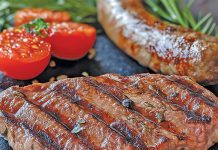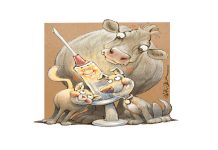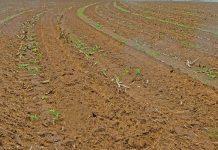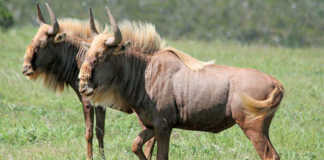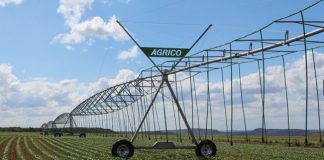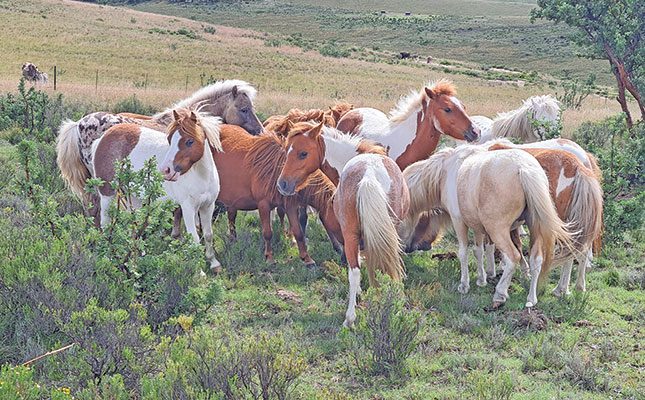
Photo: Supplied
Gawie Naudé runs the Eduan Miniature Horse Stud in partnership with his son Willem near Rhodes in the Eastern Cape.
The Naudés farm on Buttermead, about 5km outside Rhodes, in the Eastern Cape Highlands near the escarpment at the southernmost end of the Drakensberg mountain range in the Barkly East district. The farm is 1 832m above sea level.
The Buttermead horses are kept on the veld and they thrive on the mountainous mixed sourveld.
According to Gawie, miniature horses have been purposefully bred in Europe since the 1600s from a variety of other horse and pony breeds, including the Shetland pony.
Mines and pets
“Apart from being used as pets in England and the US, the miniatures were used in mines after child labour was outlawed. The first miniature horse arrived in the US in 1861.
Although they were initially used in mines, show events took hold in the US, resulting in the miniature horse we know today,” Gawie explains.

In South Africa, miniature horse breeding was pioneered from 1945 onwards by Wynand de Wet from Lindley in the Free State, who practised selective breeding Shetland stock.
Willem points out that the modern local miniature horse has subsequently developed into a well-adjusted animal, regardless of size, and it is well balanced, strong, agile and alert. The Eduan miniature breed is known to be outstandingly nimble and powerful.
Improved looks and movement
“Although the South African horses were initially bred mainly from Shetland ponies, American genetics played a decisive role in the development of the breed as it is known today. These genetics helped local breeders to improve on looks and movement. Issues such as short legs, pony-type bodies and overly thick necks were thankfully bred out over the years.
“Our herd is known for mobility of the shoulders extending into the forearm and knees, while engaging the hindquarters with fluid hock expression,” Gawie explains.
The first horses arrived on Buttermead in 1986, when Gawie bought two stallions for his son Willem to ride on. The initial stallions were soon followed by two mares, one of which, Penny, provided the genetic foundation of the Eduan stud.
This remarkable mare lived to the age of 36 and birthed and raised 26 foals with an average birthweight of between 9kg and 10kg. The Eduan mares weigh between 80kg and 90kg and the stallions between 70kg and 80kg.
“In 1989 we decided to go the stud route. While it costs about the same to raise an animal for the stud market as for the commercial market, the return on investment on a stud animal is markedly higher,” Willem continues.
Top American genetics
To that effect, the Naudés imported genetics from the US in 2012. The stallion Nirvanas Vindicator was imported from Texas. He was sired by the famous stallion First Knights Breakin all the Rules and his dam was Alliance Woody’s Sugar and Spice.
Nirvanas Vindicator’s pedigree combines two of the most sought-after and proven bloodlines in the US.
First Knights Breakin All The Rules has an impressive pedigree. Born in 1998, this palomino stallion has made a mark in the world of miniature horses. He has walked away four times with world champion laurels and also took the laurels as a world grand champion sire. This remarkable horse is also the sire of a number of world and world grand champions.
Alliance Woody’s Sugar and Spice is an ultra-refined chestnut pinto mare born in 2004. She is the offspring of Little Kings Leatherwood Buckeroo and Alliance Tender Honesty. In 2005, she was the yearling mare over 28” to 30” world champion, and in 2006, she achieved the reserve world champion title in the three-year-old and two-year-old categories.
Says Gawie: “Nirvanas Vindicator still contributes to our stud by breeding refined heads and unique colours. His offspring are performing in show arenas around the country and annually fetch some of the highest prices on our production sale. It is important for us to select breeding horses who produce mares known for finesse, femininity and refinement. The mature stallions, on the other hand, are robust, masculine and even-tempered.”
According to Willem, miniature horses are measured in centimetres rather than hands. The average shoulder height of the Buttermead mares is 82cm while the stallions measure 86cm on average. The stud’s selection criteria are based on the breeding of horses that look like their normal-sized counterparts, with outstanding balance, movement and hardiness.
Breeding season
“Hardiness is of particular importance to us, as the herd is kept on the veld,” says Willem.
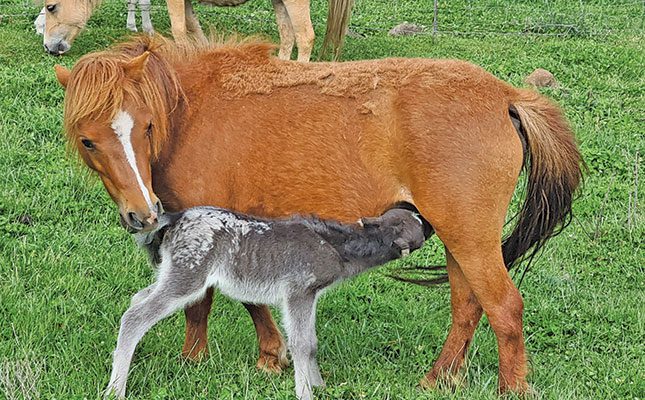
“The herd of 30 mares and three breeding stallions graze on the veld, sleep in the veld and foal in the veld. During the breeding season the herd is divided into groups of between 10 and 15 mares to one stallion. Our breeding season stretches from September to February. The mares and stallions are separated after the breeding period and the mares and foals are left on the veld.”
Lovable appeal
According to Gawie, the foals are weaned and marketed at six months. “Buyers prefer young horses because of the cuteness factor as well as the fact that the horses are mostly considered as family animals.
“I nonetheless caution prospective buyers not to consider them as house animals, and they should not be fed from the table of the owners. Miniature horses are true horses, with the
same nutritional and veterinarian needs as a large horse,” he says.
“Miniature horses need about the same amount of food as a mature sheep.” The Eduan stud caters for two markets, namely pet horses, and the show and breeding market. The objective is to breed slightly bigger animals for children to ride.
According to Willem, the horses can be safely ridden until a child’s feet reach the ground. Miniature horses obviously do not need a large amount of space, but Willem recommends at least 0,5ha for each animal. However, miniature horses are essentially herd animals and do not like to be alone.
Ideal for therapy
“The horses are outstanding companion and therapy animals. It seems as if they have an innate ability to detect what people’s needs are and to act accordingly. South African miniature horses are exhibited at the Nampo exhibition that stretches over four days, which can become quite taxing for a miniature horse in the long run.
“On one occasion one of our stallions, Eduan Gulde, formed part of the exhibition and quite understandingly became a bit tired and irritated by the third or fourth day.
“However, his mood changed immediately upon the arrival of a physically disabled child. Gulde diverted all his attention to the child, actually gently initiating physical contact and approaching the child with the utmost sensitivity and patience,” says Willem.
Because the Naudés farm in an area free of horse sickness, the stud animals seldom if ever suffer from health problems. Very few of the horses are ever kept in a stable, which also adds to the overall health of the herd. The horses are dewormed twice a year. Because of the Naudés’ extensive farming conditions, they select strictly against foaling problems.
The father-and-son team regularly compete in the show arena and are eager participants at shows in, amongst other venues, Bloemfontein, Pretoria, Riversdale, Cradock and Parys. Eduan horses have over the years twice won the supreme champion category at the show in Bloemfontein.
The Eduan Miniature Horse annual production sale is held on the last Saturday of May in Bloemfontein. An Eduan stallion, MMC at Senior Hot Spots, went for R100 000 at the May 2023 production auction, bought by Johan Enslin from the Western Cape.
Asked what the future holds for the next decade, Willem says he and Gawie will continue to focus on quality and not quantity. His daughters Mardi (15) and Anè (13) show quite an interest in the horses.
“Maybe they can one day take over from their grandfather and me and take our beloved horse stud into the future,” says Willem.
Email the Eduan Miniature Horse Stud at [email protected].




